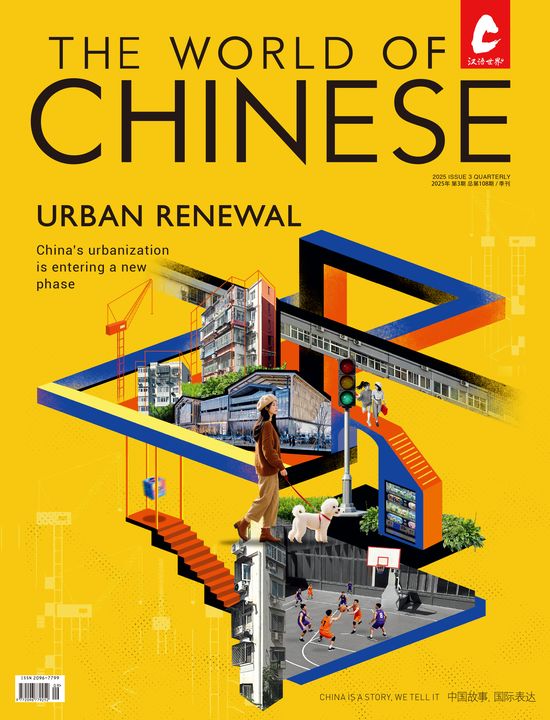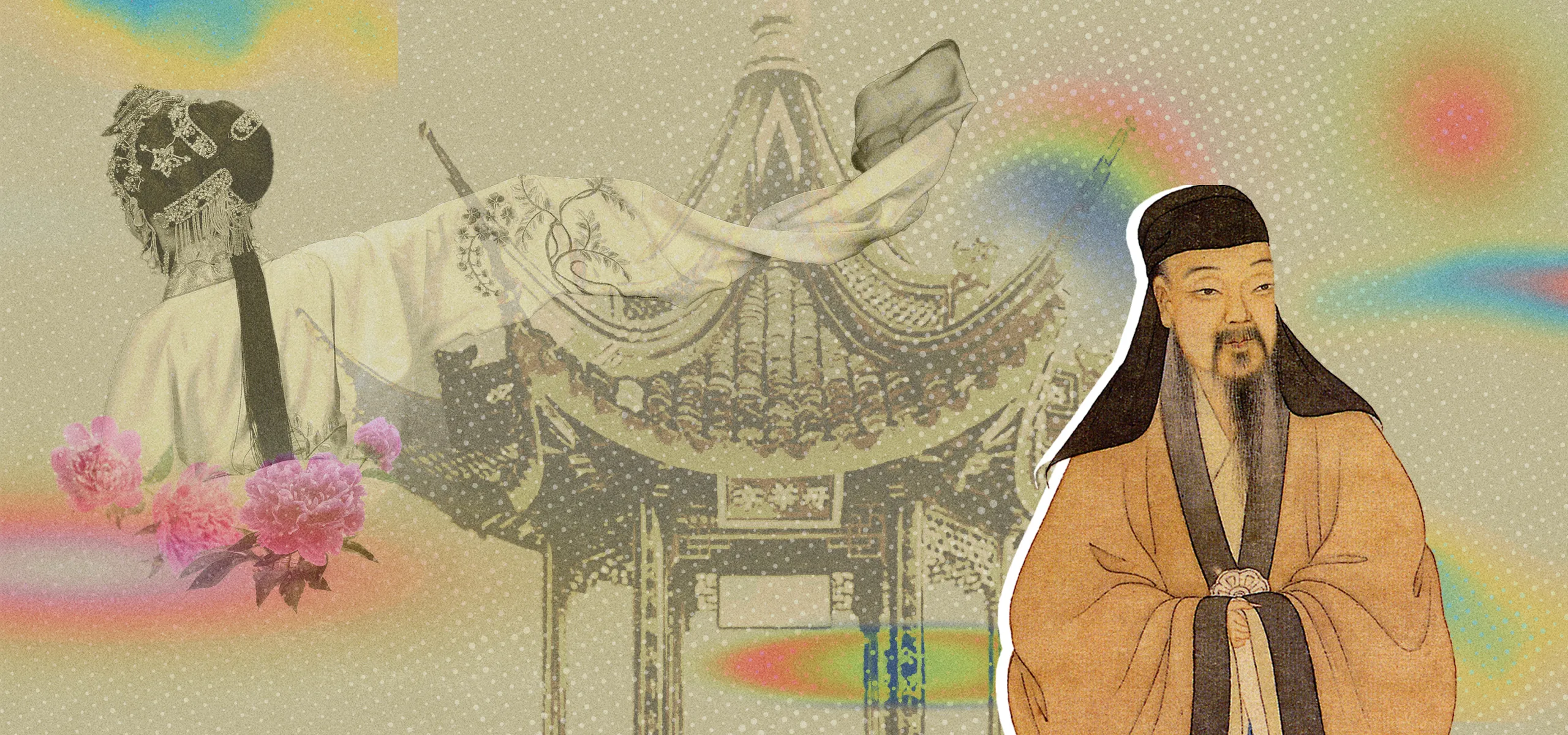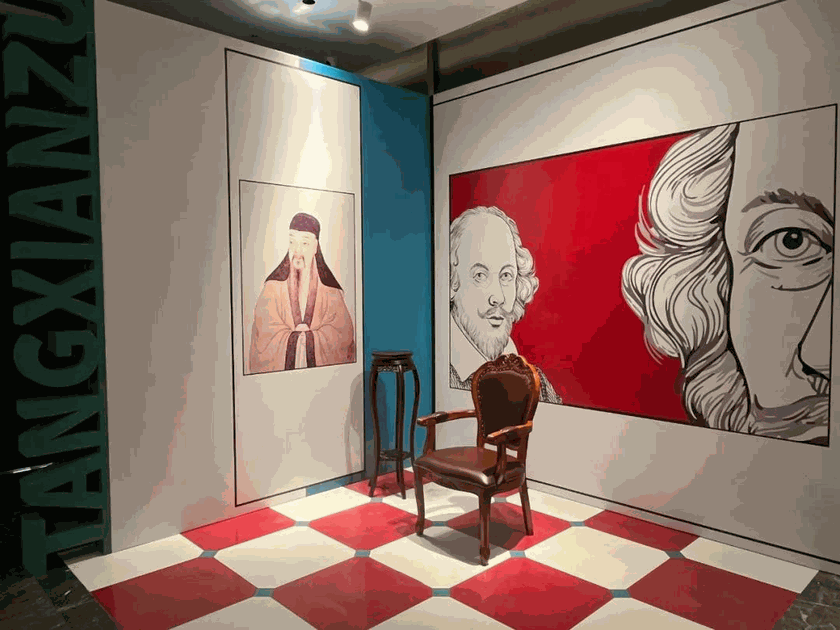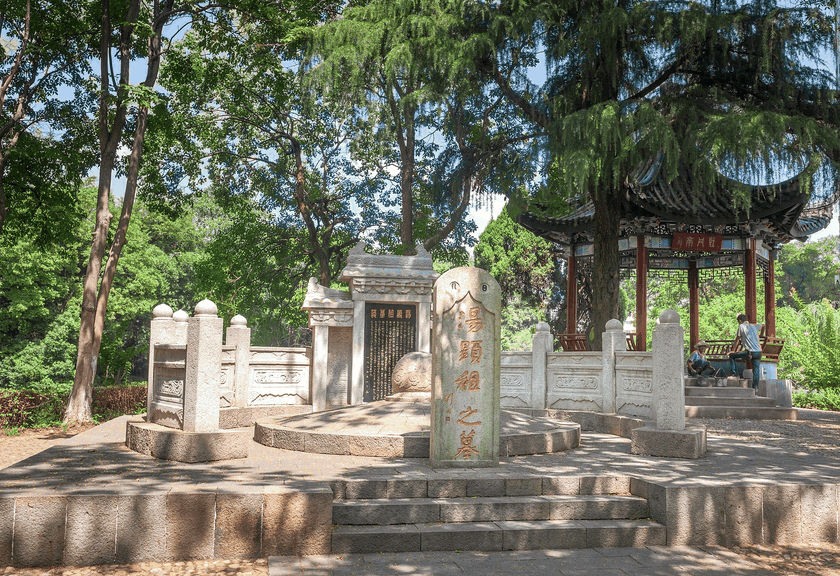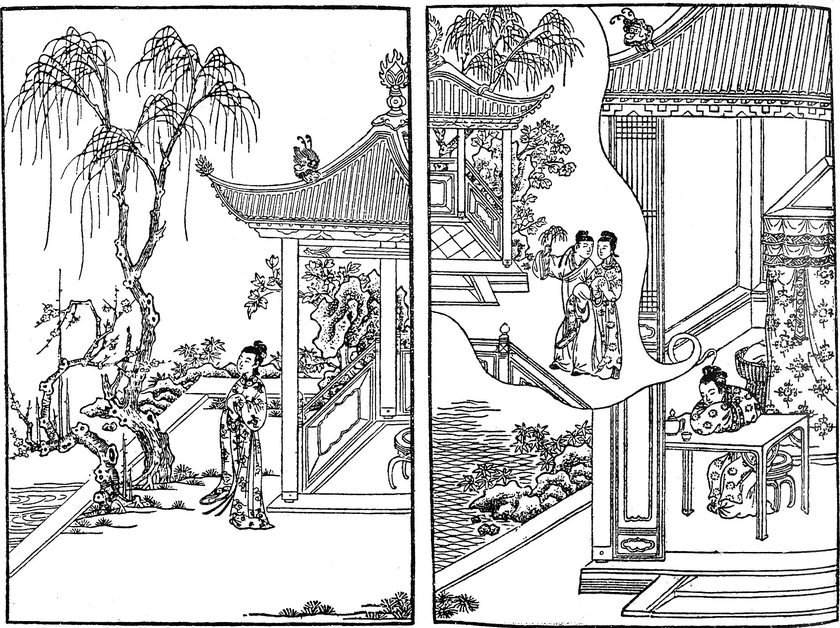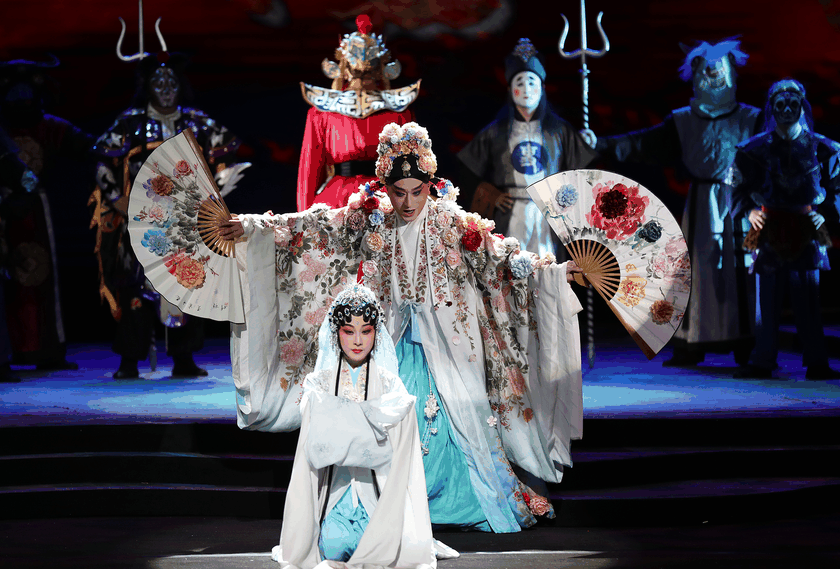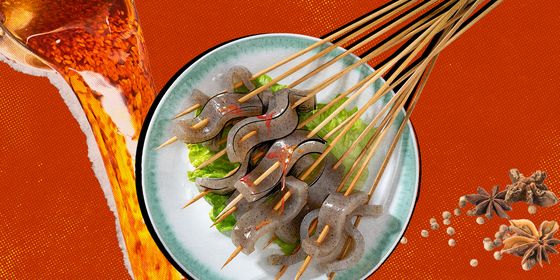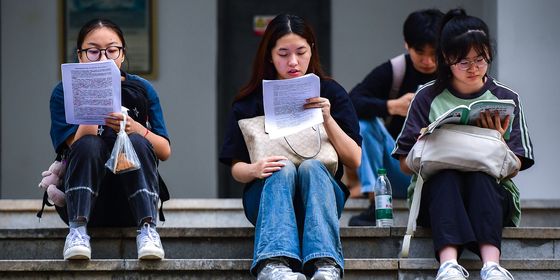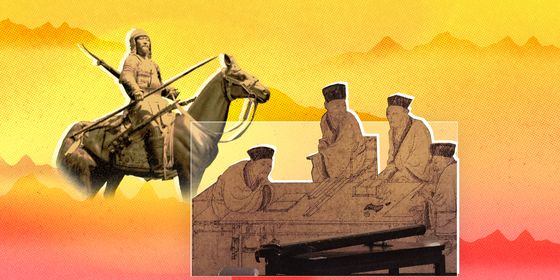A contemporary of William Shakespeare, Ming dynasty playwright Tang Xianzu left a literary legacy built on dreams and love
During this year’s London Book Fair from March 11 to 13, two literary giants were juxtaposed on a small display: “Symphony of Love and Dream: The Theatrical Worlds of Tang Xianzu and William Shakespeare.”
Both writers were active during the mid-16th century and both passed away in the same year, 1616. Japanese Sinologist Aoki Masaru first noted their similarities in his 1930 work A History of Modern Chinese Opera: “The great figures of Eastern and Western literary circles emerged in the same era—truly a remarkable coincidence.” Scholars have conducted comparative studies of the two ever since.
The moniker “Shakespeare of the East” has been used to describe Tang Xianzu in Chinese academic circles since at least 1985, first appearing in journal articles. Though some have opposed the nickname, viewing it as a sign of a lack of cultural confidence.
But while everyone in the Anglophone and Chinese spheres knows the name William Shakespeare, few in the West have heard of Tang Xianzu (汤显祖). Who was he, and why does he merit comparison to the English language’s greatest literary figure?
Discover more about renowned literary figures in ancient China:
- How a Tang Hermit an American Countercultural Movement
- Reevaluating the Legacy of One of China’s Greatest Female Poets
- Genius Loci: Lin Yutang’s Biography of Su Dongpo
Born in 1550, Tang was a witness to the decline of the Ming dynasty (1368 – 1644), which was plagued by political infighting and corruption. Though a noted scholar, Tang refused to flatter the officials in charge, and didn’t pass the highest level of the imperial examination until he was 34. He only continued to find disappointment in officialdom. After submitting a harsh criticism of the emperor regarding corruption, he was demoted. Later, he quit his position and returned to his hometown of Linchuan, Jiangxi, where he devoted the rest of his life to writing plays.
Tang’s most remarkable artistic achievement was elevating the use of dream—a long-standing tradition in Chinese philosophy and literature—to new heights.
The acts of dreaming and interpreting dreams abound in Chinese historical texts, perhaps most notably in the work of philosopher Zhuang Zhou (庄周), also known as Zhuangzi, who wrote about becoming a butterfly in a dream and waking with the thought that maybe he was the dream of a butterfly. Later, dreams became a vehicle for narration, argumentation, and emotional expression in literary works.
During the Tang (618 – 907) and Song (960 – 1279) dynasties, when Chinese poetry was at its zenith, many poets wrote about dreams. Tang dynasty poet Li Bai (李白), in “A Dream Visit to Tianmu, with Verses Left Behind,” uses splendid imagery to describe a dream journey with immortals and express his dissatisfaction with reality. Song dynasty poet Su Shi (苏轼), in his poem “A Riverside Town,” conveys his deep longing by recounting a dream in which he sees his deceased wife putting on makeup by the window.
What we consider Tang Xianzu’s masterpieces—four plays written between 1587 and 1601—are all centered around dreams. Collectively known as the “Four Dreams of Linchuan,” they cover themes ranging from romance to political corruption to religion. Together, they form a profound exploration of reality and ideals, human freedom, and social constraint.
The first dream is in the play The Purple Hairpin (《紫钗记》). Written in 1587, the play follows Huo Xiaoyu, who loses her purple hairpin and has it returned by the scholar Li Yi, whom she later marries. The couple is separated when Li is sent to the border by the military. It’s during this time that a pivotal dream occurs: Huo dreams of a swordsman in yellow giving her a pair of shoes. She interprets this as a sign of reunion with her husband. The play ends happily, as a man in yellow eventually brings Huo to her husband.
Dreams are a key element in Tang’s second and most important work, The Peony Pavilion (《牡丹亭》). A young lady from an official family named Du Liniang dreams of meeting a scholar named Liu Mengmei and falling deeply in love. Upon waking, Du goes to the garden but can’t find any trace of Liu. She falls into deep despair, and dies on Mid-Autumn Festival. Three years later, the real Liu Mengmei goes to the capital to take the imperial examinations. With permission from the judge of the underworld, Du’s spirit returns to the human world and meets Liu, where they fall in love.
In this work, Tang uses dreams to convey the idea that “love is unpredictable in its origin, but grows ever deeper (情不知所起,一往而深),” in defiance of the strict marriage customs of the day. This was a significant breakthrough in a feudal society that lacked freedom in love and marriage, and The Peony Pavilion remains celebrated for its boldness and depth.
The third dream comes from The Nanke Dream (《南柯记》), featuring a wandering adventurer named Chunyu Fen, who was once a minor general but is sent back to his hometown due to excessive drinking. Drunk one night, he dreams that he is recruited as a prince consort by the queen of an ant kingdom and appointed the governor of Nanke. Over 20 years, he implements benevolent policies and moral education, transforming the decadent and neglected district into a prosperous place. When he wakes up, he finds that everything around him is as it’s always been—the wine from the previous night still warm. He suddenly realizes that all his joys and sorrows are ultimately empty, causing him to turn toward Buddhism. Tang uses this ending to shatter society’s widely accepted view that high official positions and great wealth are the ultimate goals.
The fourth dream appears in The Handan Dream (《邯郸记》), another tale of ambition and success. In Handan county, there is a poor scholar named Lu Sheng, an avid reader who repeatedly fails the imperial examinations. In a small inn, he meets Lü Dongbin, one of the Eight Immortals, who has disguised himself as a mortal. Lu Sheng lies on a porcelain pillow given to him by the immortal and falls into a dream. In it, he marries a young lady and becomes a high-ranking official with great accomplishments. At the age of 80, he dies to the cry of his wife—only to wake from what appears to be a short nap. He surveys the scene around him, and embarks on a road to enlightenment.
Tang not only used dreams to comment on the illusory nature of life, but also as a way of criticizing the corruption and darkness of politics in the late-Ming dynasty. His characters often wake up with epiphanies about the emptiness of fame and fortune.
The “Four Dreams of Linchuan” gained tremendous influence by the end of the Ming dynasty. As part of the classical canon of Kunqu opera, they are still alive on stage today. Many scholars single out The Peony Pavilion for its lasting impact on Chinese literary culture, viewing it as a vital inspiration for Dream of the Red Chamber (《红楼梦》), one of the Four Great Classical Novels of Chinese literature. Not only is Peony frequently quoted in Dream of the Red Chamber, Peony’s protagonist, Du Liniang, through her pursuit of love and freedom, also finds a powerful echo in Lin Daiyu, one of the main characters in Dream of the Red Chamber.
Bai Xianyong (Kenneth Hsien-yung Pai), a retired professor of Chinese at the University of Southern California, Santa Barbara, is an avid admirer and scholar of both works. He argues that love in The Peony Pavilion is more than just an emotion—it carries the power of redemption for modern Chinese people, who suffer from a “loss of love and beauty” after the turmoil of the 19th century.
“The Peony Pavilion is a myth of love, elevating it to the highest form—true, deep, and transcendent love,” he said in an interview with Jiemian News. “Love becomes a force of redemption, which is why I say Kunqu opera captures the deepest emotions of the Chinese people in its most beautiful form, passing down love and beauty for future generations.”
The original version of the play takes three days to perform, but Bai created a nine-hour adaptation called The Peony Pavilion: Young Lovers’ Edition, which debuted in 2004. It has brought The Peony Pavilion to audiences across China and abroad, including the US, Greece, and even William Shakespeare’s hometown, Stratford-upon-Avon. It has since been performed more than 500 times and continues to tour.
Though Shakespeare and Tang Xianzu never heard of one another, they are remembered for giving voice to the timelessness of dreams, love, and sorrow, each in their own language and their own way, but both stirring hearts across centuries.
